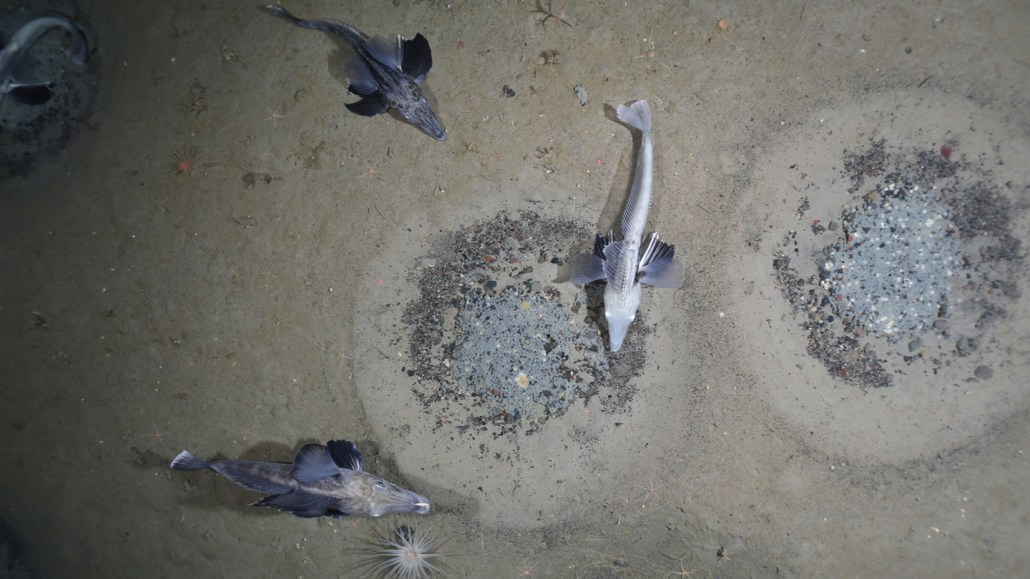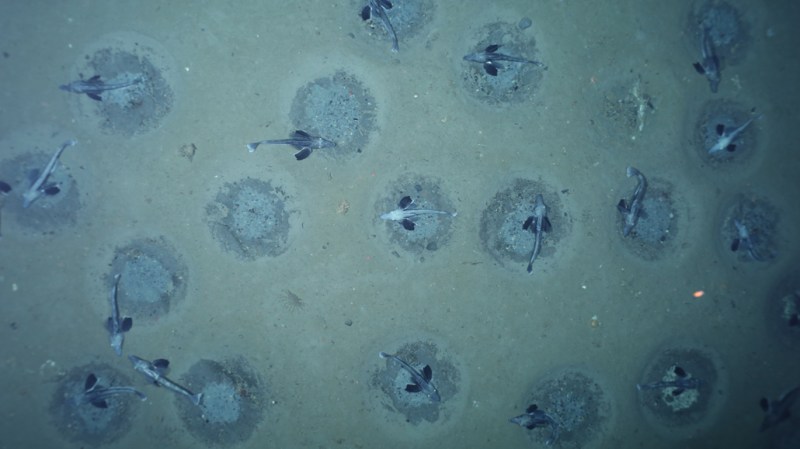
Jonah’s icefish (Neopagetopsis ionah) create circular nests with hard rock centers, where the fish can lay over 1,000 eggs.
Alfred Wegener Institute, PS124 OFOBS team
By Jake Buehler
- More than 2 years ago
Read another version of this article at Science News Explores
Five hundred meters below the ice covering Antarctica’s Weddell Sea sits the world’s largest known colony of breeding fish, a new study finds.
An estimated 60 million active nests of a type of icefish stretch across at least 240 square kilometers, nearly the size of Orlando, Fla. Many fish create nests, from freshwater cichlids to artistically inclined pufferfish (SN: 10/13/20). But until now, researchers have encountered only a handful of icefish nests at a time, or perhaps several dozen. Even the most gregarious nest-building fish species were previously known to gather only in the hundreds.
The icefish probably have a substantial and previously unknown influence on Antarctic food webs, researchers report January 13 in Current Biology.
Deep sea biologist Autun Purser of the Alfred Wegener Institute in Bremerhaven, Germany, and colleagues stumbled across the massive colony in early 2021 while on a research cruise in the Weddell Sea, which is located between the Antarctic Peninsula and the main continent.
The researchers were studying chemical connections between surface waters and the seafloor. Part of the research involved surveying seafloor life by slowly towing a device behind the scientists’ icebreaking research vessel. That device recorded video as it glides just above the bottom of the ocean and used sound to map seafloor features.
At one location on the Filchner ice shelf in the Weddell Sea, one of Purser’s colleagues was operating the camera tow and noticed that it kept encountering circular Jonah’s icefish (Neopagetopsis ionah) nests down below. Icefish, of the family Channichthyidae, are only found in the Southern Ocean and Antarctic waters and have strange adaptations to the extreme cold such as clear blood full of antifreeze compounds (SN: 9/19/98).
“When I came down half an hour later and just saw nest after nest the whole four hours of the first dive, I thought we were onto something unusual,” Purser recounts.
Purser and colleagues made three more surveys in the area and continued to find nests at a similar density, kilometer after kilometer. Perhaps one of the closest comparisons to icefish among nest-spawning fish are bluegills (Lepomis macrochirus), which form breeding colonies that can have hundreds of individuals, Purser says. But based on measurements showing about one icefish nest per four square meters across hundreds of kilometers of territory, the Weddell Sea colony is several orders of magnitude larger, the researchers say.

The colony is an “amazing discovery,” says evolutionary biologist Thomas Desvignes of the University of Oregon in Eugene, who was not involved in the research. He was especially struck by the extreme concentration of nests.
“It made me think of bird nests,” Desvignes says. “When we see cormorants and other marine birds that nest like that, one next to the other — it’s almost like that.”
It’s not clear why so many icefish are gathering in one spot to breed. There appears to be good access to plankton in this location, which would be a crucial food source for newly hatched fish. The team also found a zone with slightly warmer water in the area, which could help the icefish locate the breeding ground.
The icefish could be sustaining Weddell seals, the researchers say. Prior studies have shown the seals spending a lot of time diving in waters above the colony area.
Purser thinks that there may be smaller Jonah’s icefish colonies closer to shore where there is less ice cover. It is possible, though, that the Jonah’s icefish disproportionately rely on the massive breeding colony, effectively putting all their eggs in one basket. If so, that “would make the species extremely vulnerable” to extinction, Desvignes says. The discovery of the massive colony is one more argument for providing environmental protections for the Weddell Sea as has been done for the nearby Ross Sea, he says.
For now, Purser currently has two seafloor cameras at the colony site, where they will remain for a couple of years, taking photos four times a day to see if the nests are reused over time.
“I would say [the massive colony] is almost a new seafloor ecosystem type,” Purser says. “It’s really surprising that it has never been seen before.”






